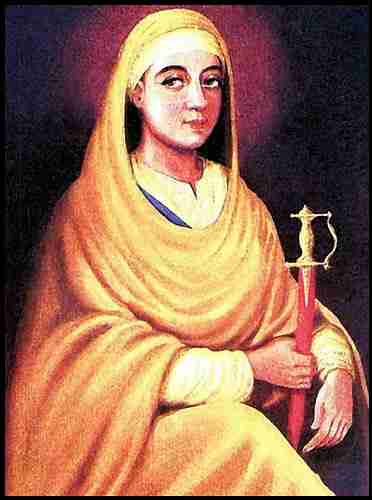- Women in Sikhism -
At the time of the Gurus women were considered very low in society. Both Hindus and Muslims regarded women as inferior and a man's property. Women were treated as mere property whose only value was as a servant or for entertainment. They were considered seducers and distractions from man's spiritual path. Men were allowed polygamy but widows were not allowed to remarry but encouraged to burn themselves on their husbands funeral pyre (sati). Child marriage and female infanticide were prevalent and purdah (veils) were popular for women. Women were also not allowed to inherit any property. Many Hindu women were captured and sold as slaves in foreign Islamic countries.
In such a climate Guru Nanak, the founder of Sikhism shocked the entire society by preaching that women were worthy of praise and equal to men. Five hundred years later, the rest of mankind is only now waking up to this fundamental truth. The Gurus actively encouraged the participation of women as equals in worship, in society, and on the battlefield. They encouraged freedom of speech and women were allowed to participate in any and all religious activities including reading of the Guru Granth Sahib.
Bibi Nanaki
Bibi Nanaki was the first person to recognize Guru Nanak as a prophet and missionary early in his life. Bibi Nanaki (Guru Nanak's sister) and Mata Tripta (Guru Nanak's mother) played very important roles in encouraging young Nanak to persue his lifelong mission.

Mata Khivi
Mata Khivi was the wife of Guru Angad and was in charge of the langar (community kitchen). She was an unlimited source of bounty and helped create a new social consciousness for women.
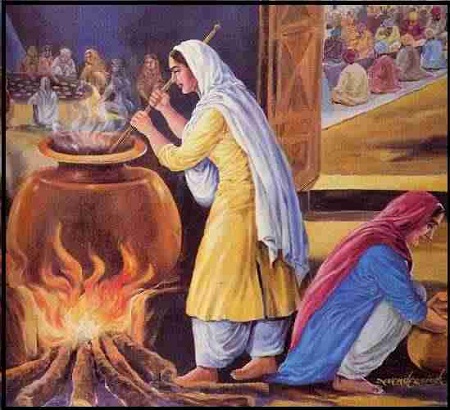
Sikh Missionaries
Guru Amar Das trained missionaries to spread Sikhism throughout the country. Of the 146 missionaries Guru Amar Das trained and sent out, 52 were women. At one time the country of Afghanistan and Kashmir were under the jurisdiction of women masands (priests). These women had complete jurisdiction in decision making, collection of revenues as well as preaching to congregations.
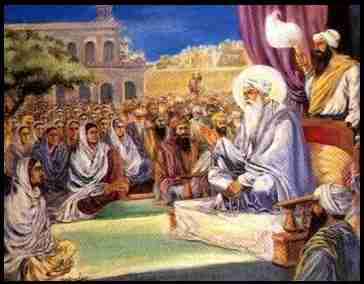
Bibi Bhani
Bibi Bhani has a unique position in Sikh history as the daughter of a Guru (Guru Amar Das), wife of a Guru (Guru Ram Das) and mother of a Guru (Guru Arjan Dev). Bibi Bhani was an inspiration during the formative period of Sikh history and symbolizes responsibility, dedication, humility and fortitude.
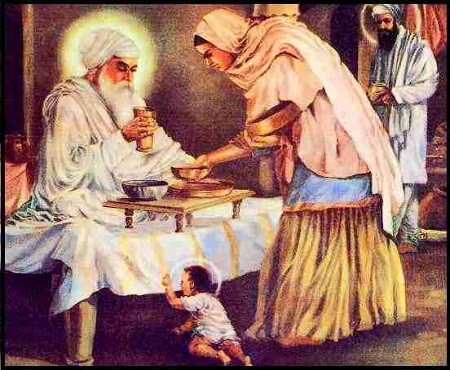
Mata Gujri
Mata Gujri was an illuminating force behind her husband Guru Tegh Bahadur and her son Guru Gobind Singh. After the martyrdom of Guru Tegh Bahadur, Mata Gujri guided and inspired her son Guru Gobind Singh. She was responsible for the training of the Sahibzadas (the four sons of Guru Gobind Singh) who gave up their lives for Sikhism at a young age. Mata Gujri was an inspiring force during one of the most difficult times in Sikh history.
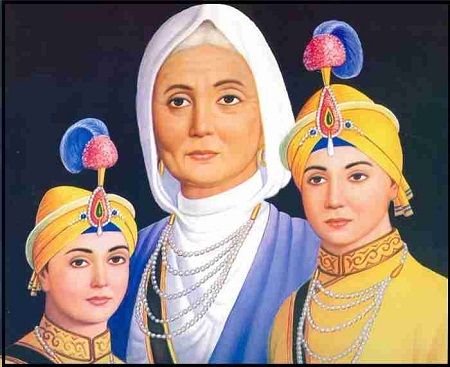
Mai Bhago
Mai Bhago was the brave women who shamed the 40 deserters to return to the battle of Muktsar. She led them into battle where they achieved martyrdom and were blessed by Guru Gobind Singh.
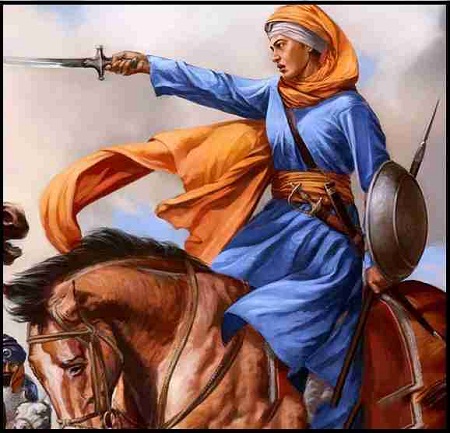
Mata Jitoji
During the baptism ceremony of the Khalsa in 1699, Guru Gobind Singh asked Mata Jitoji to participate in the first baptism by adding sugar cakes (patashas) to water which was stirred with the khanda (double edged sword) and administered to the Khalsa as amrit (sweet water).
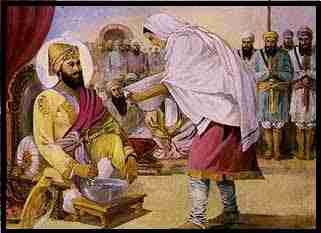
Mata Sahib Kaur
Because of her purity, Guru Gobind Singh declared that Sikhs should consider Mata Sahib Kaur as the spiritual mother of the Khalsa.
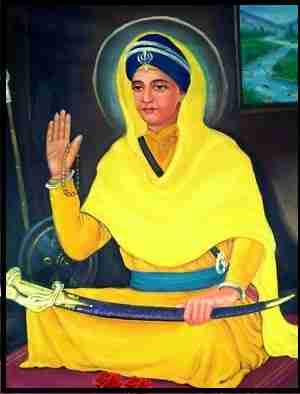
Mata Sundri
The widow of Guru Gobind Singh, Mata Sundri helped provide leadership for the Sikhs in a very difficult and tumultuous time following the death of Guru Gobind Singh. She helped maintain the sanctity of the Guru Granth Sahib as the only successor of Guru Gobind Singh and dealt strictly with pretenders and aspires of Guruship.
